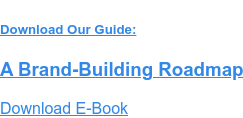
Employee brand engagement is often overlooked, but it is a critical aspect of brand strategy. No brand strategy can succeed in the long run without being fully embraced and understood by all employees responsible for its delivery. When companies develop workforces of people who are committed to their brands, far more can be achieved.
Employee brand engagement consists of two related components: The people component consists of audiences and facilitators. The content and process component includes the materials and activities that comprise the overall initiative.
PEOPLE
The first component of employee brand engagement pertains to people, both the people within the organization who need to be engaged (audiences) and the people best suited to lead that effort (facilitators).
Audiences
Who are the people within organizations that need to be educated on brand? It’s tempting to think that only employees who are customer-facing need to understand the company’s brand strategy. But this thinking is flawed and short-sighted. For starters, digital activation and social media have given all employees external-facing roles. In short, employees across all functions (and at all levels) should understand and learn to embrace the brand strategy.
Facilitators
The second factor in the people component, facilitators, refers to the people responsible for communicating brand strategy within the company. Leaders within both marketing and HR play vital roles in this effort, but without visible C-suite support, the message is unconvincing.
Senior-level management is only part of the answer when it comes to spreading the word. Leaders must communicate the message themselves and learn to identify, nurture, and leverage brand champions within their organizations. Brand champions are employees who understand, embrace, and behave in accordance with the brand. Their influence is second only to the C-suite in helping others accept and buy into the brand strategy.
A logical first step for finding these individuals is looking at employees’ social media activity. According to Weber Shandwick and KRC Research, 39% of employees have shared praise or positive comments online about their employers. Additional research shows that 21% of employees fall into an “activist” category, where they voluntarily take positive actions regarding their employers, including defending and advocating for the brand online.
So, social media activity can offer leaders an avenue to find and recruit brand champions. Still, leaders should seek to find brand advocates wherever they can, giving them the recognition and resources needed to spread the word.
Human Resources
Brands have values—and employees should embody those values—so companies need formal mechanisms in place to assess brand fit among existing and potential new employees. HR must determine to what extent an employee seems to represent the values of the corporate (or business unit) brand and, therefore, the organization.
The best way to build an authentic brand starts with hiring people who already embody some of the brand’s characteristics and reinforcing that brand through training, appropriate policies, and ongoing internal communication.
CONTENT AND PROCESS
The second component of employee brand engagement pertains to the activities used to facilitate the engagement: content and processes. An employee brand engagement initiative needs to be a formal, strategic, and ongoing effort to succeed in the long run.
Content
One of the best content tools to consider for employee brand engagement is brand stories, which is a critical component of any brand strategy. Brand stories can endear external stakeholders to the brand, to be sure, but they can also be persuasive internally by educating and engaging employees on brand strategy.
Another tool to consider for employee brand engagement is the employee value proposition, an idea that has been gaining popularity in recent years. Unlike the brand value proposition, the employee value proposition focuses on an internal audience (employees) instead of an external audience (customers). However, marketers need to ensure a tight linkage between the employee value proposition and the broader brand value proposition to avoid creating a disjointed brand.
One final employee brand engagement tool is the brand playbook, a deluxe style guide that establishes guidelines for how employees should present the brand holistically. It includes details on procedures, processes, and rules about what it means to “live the brand.” An effective brand playbook explains which types of activities and behaviors are consistent with the intent of the brand strategy, and equally important, which are not. Hootsuite built an entire library of branding for this purpose, resulting in a 50% increase in qualified job applicants who are a close fit with brand values.
The brand playbook includes the employee value proposition. Still, it also provides instructions for how employees should act in ways that align with brand guidelines in every situation, from face-to-face interactions to social media communications.
Process
There are virtually limitless options for the processes and activities marketers can use to deliver brand-related education to employees. Town hall meetings, offsite company functions, and formal training sessions are traditional avenues, but there are other options for activation channels provided through today’s digital landscape. Examples include the company intranet, YouTube videos, and social media sites (internal and public accounts).
The process is an ongoing effort. Employees need repetition and continuity to absorb complex concepts and messages. Workers should be exposed to consistent messages over time, in new and creative ways, to get those messages to stick. Since new employees will always need onboarding, companies should use that time as a starting point.
The content and processes of employee brand engagement take good ideas and turn them into reality. Companies can get their employees excited about their brands by understanding the roles these tools play. In turn, they reap the benefits that derive from greater levels of productivity and overall success.
Contact us to learn about our brand consultancy. We can help you start implementing strategies that ensure employees are engaged and establish the strongest possible foundation for your company to build on.
Recent Posts
Posts by Topics
- Brand Strategy (57)
- Brand Strategy Consulting (28)
- Brand Differentiation (27)
- Customer Experience (24)
- Brand Positioning (22)
- Marketing Strategy (9)
- Brand Extension Strategy (8)
- Customer Behavior (8)
- Brand Architecture Strategy (7)
- Brand Extension (7)
- Brand Growth (7)
- Brand Portfolio & Architecture (7)
- Brand Purpose (7)
- Brand Value Proposition (7)
- Brand Engagement (6)
- Brand Portfolio Strategy (6)
- Brand Storytelling (6)
- Rebranding Strategy (6)
- Brand Awareness (5)
- Brand Image (5)
- Branding (5)
- Rebranding (5)
- Technology (5)
- B2B Brand Strategy (4)
- Brand Experience (4)
- Value Proposition (4)
- Brand Extendibility (3)
- Brand Metrics (3)
- Brand Repositioning (3)
- Corporate Branding (3)
- Differentiation Strategy (3)
- Measurement & Metrics (3)
- Brand Engagement Strategy (2)
- Brand Portfolio (2)
- Brand Promise (2)
- Brand Voice (2)
- Digital Marketing (2)
- Digital and Brand Experience (2)
- Employee Brand Engagement (2)
- Brand Architecture (1)
- Brand Development (1)
- Brand Equity (1)
- Brand Identity (1)
- Brand Measurement (1)
- Brand Name (1)
- Brand Strategy Consultants (1)
- Brand Strategy Firms (1)
- Digital Strategy (1)
- Internal Branding (1)
- Messaging (1)


